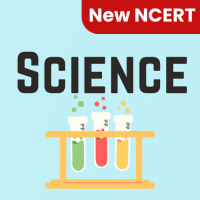Class 6 Exam > Class 6 Questions > What are the five difference between plants a...
Start Learning for Free
What are the five difference between plants and animals
Verified Answer
What are the five difference between plants and animals
PLANTS
- Plants generally are rooted in one place an do not move on their own
- Plants contain dtbrophyll and can make their own food
- Plants Ow off oxygen and take it carbon dioxide given off by annals.
- Plants eels haw eel was and other structures differ from those of animals.
- Maus haw either no or very basic ability to sense.
- Plants are autotrophic
ANIMALS
- Most annuls haw the ability to move fairly freely.
- Animals carrot nuke their own food and are dependent on plants and other intake for food.
- Animals give off carbon dioxide which plants need to make food and take in oxygen which they need to breathe.
- Animal cells do not have eel was and Sue different starters thin plait eels
- Animals have a much more Italy developed sensory and nervous system
- Animals are heterotrophic.
 This question is part of UPSC exam. View all Class 6 courses
This question is part of UPSC exam. View all Class 6 courses
Most Upvoted Answer
What are the five difference between plants and animals
Differences between Plants and Animals
1. Cell Structure:
Plants and animals have distinct differences in their cell structures.
- Plants have cell walls made of cellulose, which provides rigidity and support to the plant. Animals, on the other hand, lack cell walls.
- Plant cells also contain chloroplasts, which enable them to perform photosynthesis and produce their own food. Animal cells do not possess chloroplasts.
2. Mode of Nutrition:
Plants and animals obtain nutrients in different ways.
- Plants are autotrophic organisms, meaning they can synthesize their own food through photosynthesis. They capture sunlight, water, and carbon dioxide to produce glucose.
- Animals, however, are heterotrophic organisms that rely on external sources for their nutrition. They consume plants or other animals to obtain the necessary nutrients.
3. Reproduction:
Both plants and animals have unique reproductive methods.
- Plants have a variety of reproduction methods, including both sexual and asexual reproduction. Asexual reproduction can occur through methods like budding, runners, or vegetative propagation. Sexual reproduction involves the fusion of male and female gametes.
- Animals primarily reproduce sexually, involving the fusion of male sperm and female eggs. However, some animals also have the ability to reproduce asexually, such as through budding or parthenogenesis.
4. Mobility:
One of the most significant differences between plants and animals is their mobility.
- Animals are generally mobile organisms and can move from one place to another. They have specialized structures like muscles and limbs that enable them to perform locomotion.
- Plants, on the other hand, are sessile organisms that lack the ability to move actively. They are firmly rooted to the ground and rely on other means, such as wind or animal pollinators, for dispersal.
5. Respiration:
Plants and animals have distinct methods of respiration.
- Plants perform respiration through tiny pores called stomata present on their leaves. They take in carbon dioxide and release oxygen during respiration.
- Animals typically respire through specialized respiratory organs such as lungs, gills, or tracheae. They take in oxygen and release carbon dioxide as a waste product.
In conclusion, plants and animals differ in various aspects such as cell structure, mode of nutrition, reproduction, mobility, and respiration. These differences highlight the diversity and complexity of the living organisms found in our natural world.
1. Cell Structure:
Plants and animals have distinct differences in their cell structures.
- Plants have cell walls made of cellulose, which provides rigidity and support to the plant. Animals, on the other hand, lack cell walls.
- Plant cells also contain chloroplasts, which enable them to perform photosynthesis and produce their own food. Animal cells do not possess chloroplasts.
2. Mode of Nutrition:
Plants and animals obtain nutrients in different ways.
- Plants are autotrophic organisms, meaning they can synthesize their own food through photosynthesis. They capture sunlight, water, and carbon dioxide to produce glucose.
- Animals, however, are heterotrophic organisms that rely on external sources for their nutrition. They consume plants or other animals to obtain the necessary nutrients.
3. Reproduction:
Both plants and animals have unique reproductive methods.
- Plants have a variety of reproduction methods, including both sexual and asexual reproduction. Asexual reproduction can occur through methods like budding, runners, or vegetative propagation. Sexual reproduction involves the fusion of male and female gametes.
- Animals primarily reproduce sexually, involving the fusion of male sperm and female eggs. However, some animals also have the ability to reproduce asexually, such as through budding or parthenogenesis.
4. Mobility:
One of the most significant differences between plants and animals is their mobility.
- Animals are generally mobile organisms and can move from one place to another. They have specialized structures like muscles and limbs that enable them to perform locomotion.
- Plants, on the other hand, are sessile organisms that lack the ability to move actively. They are firmly rooted to the ground and rely on other means, such as wind or animal pollinators, for dispersal.
5. Respiration:
Plants and animals have distinct methods of respiration.
- Plants perform respiration through tiny pores called stomata present on their leaves. They take in carbon dioxide and release oxygen during respiration.
- Animals typically respire through specialized respiratory organs such as lungs, gills, or tracheae. They take in oxygen and release carbon dioxide as a waste product.
In conclusion, plants and animals differ in various aspects such as cell structure, mode of nutrition, reproduction, mobility, and respiration. These differences highlight the diversity and complexity of the living organisms found in our natural world.

|
Explore Courses for Class 6 exam
|

|
Question Description
What are the five difference between plants and animals for Class 6 2025 is part of Class 6 preparation. The Question and answers have been prepared according to the Class 6 exam syllabus. Information about What are the five difference between plants and animals covers all topics & solutions for Class 6 2025 Exam. Find important definitions, questions, meanings, examples, exercises and tests below for What are the five difference between plants and animals.
What are the five difference between plants and animals for Class 6 2025 is part of Class 6 preparation. The Question and answers have been prepared according to the Class 6 exam syllabus. Information about What are the five difference between plants and animals covers all topics & solutions for Class 6 2025 Exam. Find important definitions, questions, meanings, examples, exercises and tests below for What are the five difference between plants and animals.
Solutions for What are the five difference between plants and animals in English & in Hindi are available as part of our courses for Class 6.
Download more important topics, notes, lectures and mock test series for Class 6 Exam by signing up for free.
Here you can find the meaning of What are the five difference between plants and animals defined & explained in the simplest way possible. Besides giving the explanation of
What are the five difference between plants and animals, a detailed solution for What are the five difference between plants and animals has been provided alongside types of What are the five difference between plants and animals theory, EduRev gives you an
ample number of questions to practice What are the five difference between plants and animals tests, examples and also practice Class 6 tests.

|
Explore Courses for Class 6 exam
|

|
Signup for Free!
Signup to see your scores go up within 7 days! Learn & Practice with 1000+ FREE Notes, Videos & Tests.


















